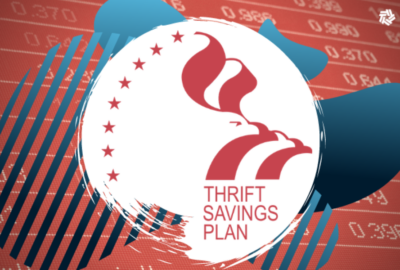Hubbard Radio Washington DC, LLC. All rights reserved. This website is not intended for users located within the European Economic Area.
Three good reasons to save toward TSP-millionaire status
In frequent flyer plans, the more you put away in your Thrift Savings Plan, the closer you will get to having TSP-millionaire status.
In frequent flyer plans, the more you take-to-the-air, the closer you get to elite status. And, the more you put away in your Thrift Savings Plan (TSP), the closer you will get to having TSP-millionaire status. For more on what that money can do for you, the Federal Drive Host Tom Temin talked with retired federal manager Abe Grungold of AG Financial Services.
Interview Transcript:
Abe Grungold We always talk about how to become a TSP millionaire, but we really need to talk about why it’s so important to be a TSP millionaire. And I have three critical, reasons to be a TSP millionaire. And the first one is, in retirement, you may need to supplement your income. The second one is, how will you pay for your long term care needs in retirement? And the third one is, you never want to run out of money in retirement.
Tom Temin Well, those are pretty good reasons. And how does it fit in? We’re talking about the bulk of federal employees are [Federal Employees Retirement System (FERS)] retirees. And maybe just review for us what the FERS annuity is all about, in addition to Social Security and the relation of those two.
Abe Grungold Yes. The FERS annuity is based on a formula of the number of years that you have as a federal employee service time, multiply times your salary. And then there’s a multiplication factor. So you get a FERS annuity. It comes out to about one-third of your salary prior to retirement. So that is built together with Social Security. And you can have Social Security at age 62 or a later year, whichever year you decide to select it. So let’s say you are 62 and you are receiving a FERS annuity, and you have elected to take Social Security. What happens when both of those monthly, income payments to you cannot pay for your monthly expenses? How will you pay that difference in your monthly expenses? And if you’re a TSP millionaire, you would make a withdrawal from your TSP to supplement your income. And a lot of federal retirees have to do this. They have to, and it’s called filling the gap of your monthly expenses, especially if you don’t want to work part time in retirement.
Tom Temin Well, at some point you have to take a minimum withdrawal, by law. But 62 is way ahead of when that would happen. So it sounds like to supplement your income before the required minimum distribution of your TSP, your RMD, then you would have to withdraw from the principal at that point.
Abe Grungold Yeah it’s a required minimum distribution mandatory. It starts around age 73. But if you decide to retire at 62 and you still are carrying a mortgage, you want to start doing some travel and you want to do some other things, before you know it, your monthly expenses may far exceed your monthly income of your FERS annuity and your Social Security. So you need to make up the difference. And if you do not want to work part time in retirement, making up the difference can be done with making a withdrawal from your TSP. I did that when I first retired from the government, and I did have a part time job. I wasn’t collecting Social Security. I did have my FERS annuity, but I was making a TSP withdrawal to make up the difference.
Tom Temin Now 62. How realistic is that for people to retire in mass? Some people may want to work because they like their work, but 62 is kind of young these days to retire unless you’re rich.
Abe Grungold It is. There are federal retirees who retired at 57. There’s a large bulk of them. Law enforcement, air traffic controllers, they face mandatory retirement at 57. And certainly I have clients who are working for the government in their 70s. But 62 seems to be a popular time for retirees. And they start thinking about it very seriously at 62, because they know that they can collect that early Social Security. So they think that, oh, if I get my FERS annuity, along with my Social Security, that should be enough. But you may have to draw a little bit from your TSP, or you’re going to have to go back to work part time.
Tom Temin We are speaking with Abe Grundgold, proprietor of AG Financial Services in Florida and a retired federal manager. And we know how many millions you had in your TSP from earlier interviews. But if you retire at 62, you can have a reasonable expectation of living at least 20 more years. Very likely 30 more years. And so at some point, that you have to make sure that your investment strategy supports the required minimum distributions and not shrinking the principal.
Abe Grungold So that falls under my third reason, Tom. And that is you do not want to run out of money in retirement. So let’s take that scenario. Let’s say you do have $1 million in your TSP. You retire at age 62 and you want that million dollars to last. So let’s just assume that you have your entire million dollars in the G fund. You have invested in the G fund. At age 62 you have $1 million. And you start withdrawing $30,000 a year from your TSP to supplement your income or to do anything extra that you want to do travel wise, etc.. Spoil your grandchildren. That million dollars is going to last 33 years, and you’ll be 95 years old. Now, even if you invested in the G fund, you’re still going to have a balance in your TSP at age 95. And we should all be so lucky to live to be 95. But this is important that if you want to be in a position that you do not want to run out of money.
Tom Temin A couple of points. 95 can be a curse or a blessing. I’ve seen 95 year olds that are both ways, but their RMD is more than $30,000 on $1 million, wouldn’t it? Isn’t it 4%, so that would be 40,000.
Abe Grungold Yes.
Tom Temin So how long will it last then?
Abe Grungold It should still last, because your TSP will be growing in the G fund. But if you want to make sure that it’s going to be, certainly enough money to 95, you may have to invest a little bit more aggressively other than the G fund. But yes, it will last to 95. Even if you have to take out, your RMDs, you still will have a significant balance at age 95.
Tom Temin And if you spend like a few years, say, from 90 to 95, and you’re pulling out more than the RMD and reducing the principal, so what, you’ll still probably check out before the principal disappears.
Abe Grungold So let’s say you are 90, you may have to go into a nursing home that falls under my second critical reset. So how will your long term care needs be paid for your nursing home? Well, nursing homes cost anywhere from 75,000 to $150,000 per year, depending where you are in the United States. And your TSP is going to fund that. It’s going to fund that, because you’ll be giving the nursing home your FERS annuity. You’ll be giving them your Social Security. And you can still have money from your TSP that covered that large expense of long term care from the age of 90 to 95. And that is a very important reason to have a TSP of $1 million.
Tom Temin So a very good rule of thumb might be to develop a budget and see where it stacks up against FERS plus Social Security plus withdrawal of TSP, followed by a replaced by the required minimum distribution when you reach that age.
Abe Grungold Right. It’s always good to have a budget, but it’s always better to know that you have a pile of money that you can go to. That rainy day fund that our parents always tell us. It’s good to have that available for whatever you need. Supplement your income, needing to go to a nursing home and you never want to run out of money during your retirement, so it is critical.
Tom Temin And don’t forget to budget $2 a week for a Powerball ticket.
Abe Grungold Absolutely, I still play.
Copyright © 2024 Federal News Network. All rights reserved. This website is not intended for users located within the European Economic Area.
Tom Temin
Tom Temin is host of the Federal Drive and has been providing insight on federal technology and management issues for more than 30 years.
Follow @tteminWFED





